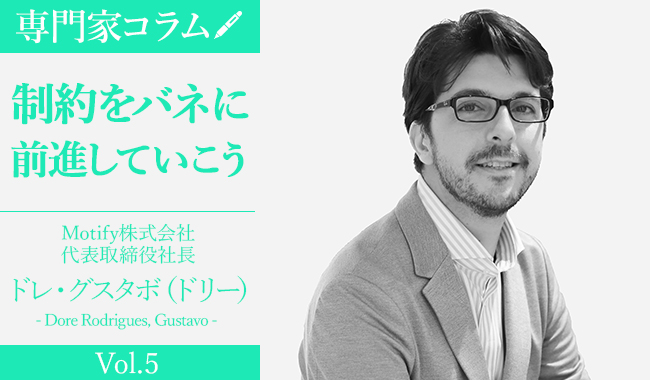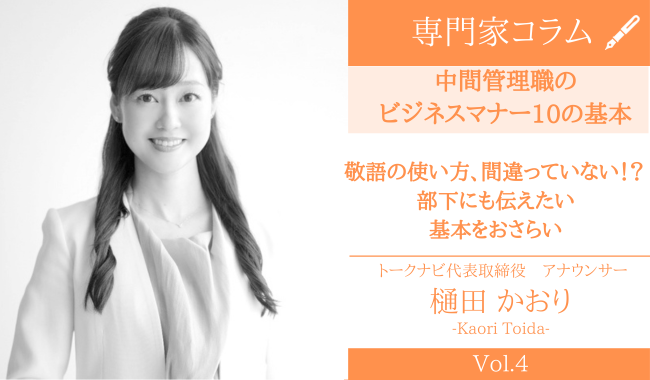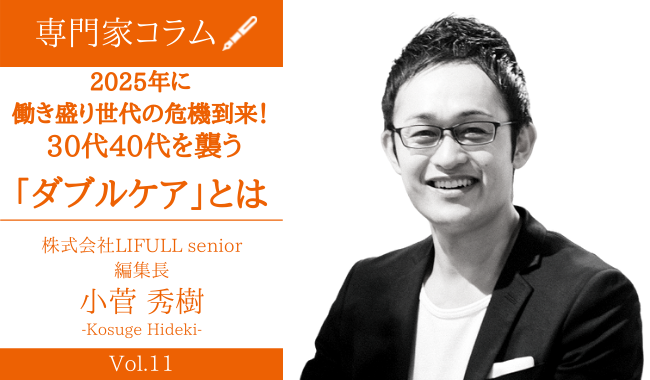制約をバネに前進していこう

今月は、私が去年の一年間に読んだ中で一番魅力的だと思った本について話そう。Kindle ライブラリによると、私が去年読んだ本の数は65冊。一週間に1冊ちょっとの割合だ。その中で一番気に入ったのが、「A Beautiful Constraint」(制約、この素敵なもの)だった。altMBA[リーダー層向けの集中型オンラインワークショップ]の人たちがクラスの前に読むよう勧めてくれた本で、もう大好きになってしまった。
人は、制約を限界という意味に捉えがちだ。制約は、私たちの生活や仕事にとてもネガティブな影響を与えるものなのだと。
これを読まれている方はTOC(Theory of Constraint、「制約条件の理論」)のことを聞いたことがあるかもしれない。私が今言っているのは、TOCのことではない。TOCでは、何がチームの機能を邪魔しているのか、最も弱い部分は何なのかを分析する。TOCでは、あなたの最も弱い部分が、全体の強さを決定づけると考えられている。その弱い部分を強化したら次の弱点に移行して、問題をひとつひとつ解決していく。私が今お話ししようとしているのはそれではない。
お話ししたいのは、インスピレーションの中核として、制約を有益に活用する方法だ。制約がどう有益となるかを説明する興味深いストーリーとして、任天堂のマリオのキャラクター開発が挙げられる。宮本茂は、ファミコンコンソールの少ないピクセル数の中でゲームのメインキャラクターを作成する、という困難な課題に直面した。このため彼は、キャラクターが腕を体から離すことができるよう、服をオーバーオール風にした。口のように見せようと、ひげを加えた。配管工の話は、すべて後で作られたもの。宮本茂は、制約の中で知恵を絞り、世界の誰もが知っているポップカルチャーのキャラクターを生み出すことに成功したのだ。
あらゆることがあなたの心のあり方に関係している、ということを研究者のアダム・モーガンとマーク・バーデンは見出した。モチベーションが低いと、人は制約を前進を止める重りとして捉える傾向がある。より高いものを目指す代わりに、制約の範囲内で目標を調整するわけだ。一方、同じ状況の下でも、モチベーションの高い人々は革新的なソリューションを考え出し、制約があるからこそ、さらに多くを成し遂げていく。
モーガンとバーデンは、イスラエルの小規模農家たちが灌漑システム会社のネタフィムを立ち上げた例を挙げている。イスラエルには、アジアやブラジルと同じ方法で農業を行うには、十分な水がない。しかし、検索してみれば分かる通り、イスラエルは農業に関して世界でも最高クラスの実績を誇る国なのだ。ネタフィムのオーナーたちは、水の使用量が少なく、スプリンクラーや他の従来の灌漑方法よりも効果的な、新しい点滴灌漑システムを開発した。現在、ネタフィムは世界的に拡大中で、すでにインド政府と現地農業の改善のため協力している。彼らは単に、できるのはここまでだなと言って、彼らの野心を従来の方法で得られる水の量に合わせて小さくしてしまうことも出来たのだ。
「ネタフィムのように、制約に直面して野心を小さくしたりしない人々こそ、制約を素敵なものに変える方法を最も発見しやすいのです」― モーガン&バーデン
野心が重要、と理解できたところで、あなたの心のあり方を変えるためのステップを紹介しよう。
1- 過去と決別する
何であれ今あなたがしていることは、あなたの過去によって生まれ、形作られたものだ。私たちは、過去の状況や行動への依存から自分自身に損をさせてしまいがちだ。私がソニー・VAIOにいた時、上層部の人が「これをやるべきだ、なぜなら前にそうしたことがあってうまくいったから」といった意味のことを言うのを時として聞いたものだ。その後ソニーはVAIOを2014年初めに売却するに至るのだが、VAIOが未来に向けた新しい戦略を生み出す妨げとなっていたのは、あの過去の成功に「囚われた状態」だったと固く信じている。
過去への依存から抜け出す方法は、行動とプロセス対して問いかけていくことだ。私たちが行おうとしているこの決定の、あるいはプロセスの、基本にある原則は何だろうか?なぜこのやり方で、私たちは物事を行っているのだろうか?
2- 駆り立てる問いかけをしていく
大事なのは、 あなたに前向きな考え方をさせるような質問を問いかけていくこと。たとえば、[Googleの共同創業者・元CEO]ラリー・ペイジは、Googleに「10x questions 」[これまでの対処法の10倍のインパクトを持つ答えを求める質問]という一連の質問を与えている。Googleは、Google X と呼ばれる新しい部署まで作って、その質問に取り組んでいる。質問は例えば次のようなものだ:自動車事故を減らすにはどうするか?事故の90パーセントが人的エラーによるものだが、どうすれば人的な要因を自動車に関する諸要素から取り除くことができるだろうか?
もう1つの素晴らしい例は、たった5ユーロの価格でなお利益を上げるテーブルを開発するよう求められたイケアの製品担当の責任者だ。従来の考えはどれも答えを与えてはくれない。現在のプロセスにも解決策は見つからない。創造的になって課題解決をして行くしかない。このイケアの場合、在庫のドアを2つに切ってテーブルとして販売することが、その課題への答えとなった。
3-もし・・・ならできる:制約に起因する問題の解決策を見つけよう
これはあなたが会議などで行う会話に深く関連している点。重要なのは、「私たちにはできない、なぜなら」を止めて、「もしこうであれば私たちはできる」へと変えること。 「政府から許可を得るのに時間がかかりすぎるから、間に合わせるのは無理です」と言う代わりに、「政府の許可を既に受けているパートナーを見つければ、間に合わせられます」という言い方をするべき。会話がポジティブで活力を持ち、新しいアイデアへと開かれたものになる。
私が共感できる例のひとつは、Airbnbのストーリーだ。Airbnbは新規客を増やそうと奮闘している小さな新興企業だった。ほとんどの利用者たちが写真をもとに決定を行っていることに彼らは気づいた。しかし彼らの周囲には、最高の状態でインテリアを撮影するカメラも技術もなかった。解決法は、写真を撮影のための写真家のデータベースを始めることだった。賃貸関係のコミュニティから始めて、地域の写真家や愛好家を集めたものだ。「彼らの写真家としての技術と私たちのコミュニティの人々を活用すれば、各宿泊施設に素晴らしい写真を提供できるのです。」
4- 豊かさを創り出す
ここでのポイントは、リソースの豊かな人になる、ということ。どういう意味かって?この場合、自分たちに必要なものを豊富に持っている他の人を見つけ、彼らへアクセスする能力のこと。ほとんどの人は、自分のリソースは自分に与えられているだけのものと考えがちで、そうしたリソースの限界を自身の現実として受入れてしまう傾向がある。彼らは、「これをやるのは無理、だって上司が私に予算をくれないから」とか「それはできない、そういうスキルを持つ人を誰も知らないから」などと言うものだ。
だがリソースの豊かな人には、私たちの周りすべての潜在的なリソース源が見えている。ステークホルダー、外部パートナー、リソースのオーナー、そして直接的な競争相手さえもリソースの供給者になり得るのだ。豊かさを生み出すには、「共通の課題」を探し、「相手に不足しているものを私たちも豊富に持っていることを認識」できないといけない。ほとんどの戦略的パートナーシップはそのようなものだから、新しくは聞こえないかもしれないが、その原則を理解すれば、新しいリソースをどこにでも探し始めることができるのだ。
素晴らしい例は、シリコンバレーという自社のロケーションの特性に着目したヴァージン航空だ。広報活動を強化しようと、彼らは自社の航路を他のブランドと共同使用して、この地域のハイテクに精通した人々に向けたプロモーションを行ったのだ。例えば、機内でのパジャマ・パーティーを行ったヴィクトリアズ・シークレットとのコラボレーションは、従来のメディアで報道されただけでなく、ブロガーやその他のシリコンバレーのインフルエンサーたちに直接訴えるものとなった。
結論:
制約を吟味しながら、大きな野心を保つことができる人々は、イノベーション競争とこの絶えず変化するビジネスの世界で勝利する可能性が高くなる。今あなたはどんなプロセスの中にいるのか?あなたの、10倍の効果を生む野心的な目標は何か?あなたの話し方は、「・・・できない」か「もし・・・ならばできる」のどっち?あなたの会社にはどんな未開発のリソースが眠っているのか?
モティファイ株式会社の始まりはゼロからスタート。外国人でコネクションもない、お金もない、経営の経験もない。WelcomeHRを作るまでの道のりが長かったが、計画を立て、外国人ということを強みと考えれば、日本語のいらずの強い開発チームが作れる。また。既に同じお客さんがいるパートナーと組む。だんだん自分の制限からビジネスを生み出している。直接相談したい人も大歓迎、お互いのリソースを増やしましょう!
Use Constraints to propel you forward.
This month I will talk about the most beautiful book I read this whole year. And according to my Kindle Library, I read 65 books this year. A little more than 1 per week. Inside all of those, "A Beautiful Constraint" won as my favorite. It was recommended to me by the AltMBA team, for me to read before class start. And I fell in love with it.
People tend to think of constraints as limitations. A constraint is something that has a very negative impact on our lives and in our business.
If you ever heard of the TOC, the theory of constraint, this is NOT what I am talking about this time. In the Theory of Constraint, you analyze what is holding your team back, what is the weakest link. In TOC, you are just as strong as your weakest link. So once you strengthen that area, you go to the next one, fixing your problems one by one. I am talking about something different.
What I am talking about is how you can use constraints to your advantage as a pillar of inspiration. A fascinating story to explain is the Mario character from Nintendo. With the limited number of pixels they had in their Famicon console, Shigeru Miyamoto had a significant challenge to create the main character of the game. So to be able to separate the arms from the body, he made the clothes like a jumper. To create the illusion of a mouth, he added a mustache. The whole plumber story came later. He played inside the constraints and was able to create one of the most recognizable characters of pop culture.
What researchers Adam Morgan and Mark Barden discovered is that it is all related to your mindset. If motivation is low, people tend to use constraint as an anchor that holds them back. Instead of aiming for higher things, they will adjust their goals inside the constraint. At the same time, under the same situation, people with high motivation will create innovative solutions and achieve even more because of the constraint.
An example that Morgan and Barden offered was how the small farmers from Israel developed the irrigation system company Netafim. Israel lacks enough water to do farming in the same way as we do in Asia or people do in Brazil. But if you ever search online, Israel is one the highest performing regarding farming in the world. The owners of Netafim developed a new drip irrigation system that uses less water, and it is more effective than sprinklers or other traditional irrigation methods. Now Netafim is expanding globally and already working with the Indian government to improve their farming. They could have just said: this is as much as we get and scale back their ambitions to the amount of water they could use under the old methods.
"Those who refuse to scale back ambition in the face of a constraint, like Netafim, are the ones most likely to find a way to make the constraint beautiful" Morgan&Barden.
Now that we understood that ambition is important, I am going to guide you through the stages to change your mindset as well.
1- Break with your past
Whatever you are doing now, it was built and molded by your past. We tend to victimize ourselves based on past situations and behaviors. When I was at SONY VAIO, sometimes a high-level boss would say something like: "We should do this, because we did it in the past and it worked." Well, Sony sold VAIO at the beginning of 2014, and I firmly believe it was that "lock" in the past success that was holding them from developing new strategies for the future.
The way to break from your path dependence is questioning behaviors and processes. What are the principles behind this decision or this process that we are implementing? Why are we doing things this way?
2- Ask Propelling Questions
The point is to ask questions that will force you have forward-thinking. Larry Page, for example, brings to google the 10x questions. They even created a whole new department called Google X to work on those. One of the questions was: How to reduce car accidents? Being that 90% of accidents are human error, how can we take the human out of the equation in a car?
Another great example is when the head of the product at Ikea got asked to create a table that costs only 5 euro and still makes a profit. None of the old thinking will give you that answer. None of your current processes won't give you a solution, either. You have to start creating and do problem-solving. For Ikea, that answer was to cut a door they had in two parts and sell as a table.
3- Can-if. Finding solutions to constraint-driven problems
It is a lot related to the conversation you are bringing to the table. The key is to stop "We can't because" and move to "We can if so and so." Instead of saying, "We can't make it that way because it would take too much time to get authorization from the government," the phrase should be, "We can make it if we find a partner who already has the government authorization." The conversation becomes a positive one, oxygenated, and open for new ideas.
One example that I can identify with is the Airbnb story. They were a small startup struggling to increase adoption. They learned that most users were making decisions based on photos. But their community lacked cameras or the skills to photograph interiors at their best. The solution was to create a database of photographers, first from their renting community, that would gather local photographers and hobbyists to take pictures. "We can offer great photos for each accommodation if we use other people's skills as photographers, people from our community."
4- Creating Abundance
The point here is to become a resourceful person. What does that mean? In this case, the ability to see and access from others the abundance that they have, and we need. Most people tend to think their resources are given to them. They tend to accept the limits of those resources as their reality. They said, "We can't do this because my boss does not give me the budget," or "We don't know anyone with those skills, so we can't do it."
Resourceful people see potential sources of resources all around us. Stakeholders, External partners, Resource Owners, and even our direct competition can be a place of resource. To create the abundance, you have to look for a "shared agenda" and "recognize they lack something we have in abundance." Most of the strategic partnerships are that way, so it might not seem new, but once you understand that principle, you can start to look for new resources everywhere.
A great example is Virgin Airlines that noticed their particular location in Silicon Valley. They wanted to increase PR and used their route together with other brands to promote for the tech-savvy people from the region. For example, they partnered with Victoria Secret for a pajama party in a plane and not only got conventional media coverage but directly reached out to the bloggers and other influencers from Silicon Valley.
Conclusion:
People who can look over the constraints and keep their ambitions high are more likely to win in innovation and this ever-changing world of business. What is the process you are currently on? What is your 10X ambitious goal? Are you talking, Can't, or Can-if? Which unexplored resources does your company have?
I started Motify KK from zero. As a foreigner, I had no connections, no money and no experience as an entrepreneur. Until we create WelcomeHR, it has been a long journey, but I used my constraint of being a foreigner here to create a strong IT team. Since for IT we don't need to speak Japanese. I also partner with companies with the same target client for distribution. I feel I created my business little by little over my constraints. If you want to talk about yours or want to partner with us, I would be very glad. Let's increase our resourcefulness together!!!

 ツイート
ツイート


 シェアする
シェアする







